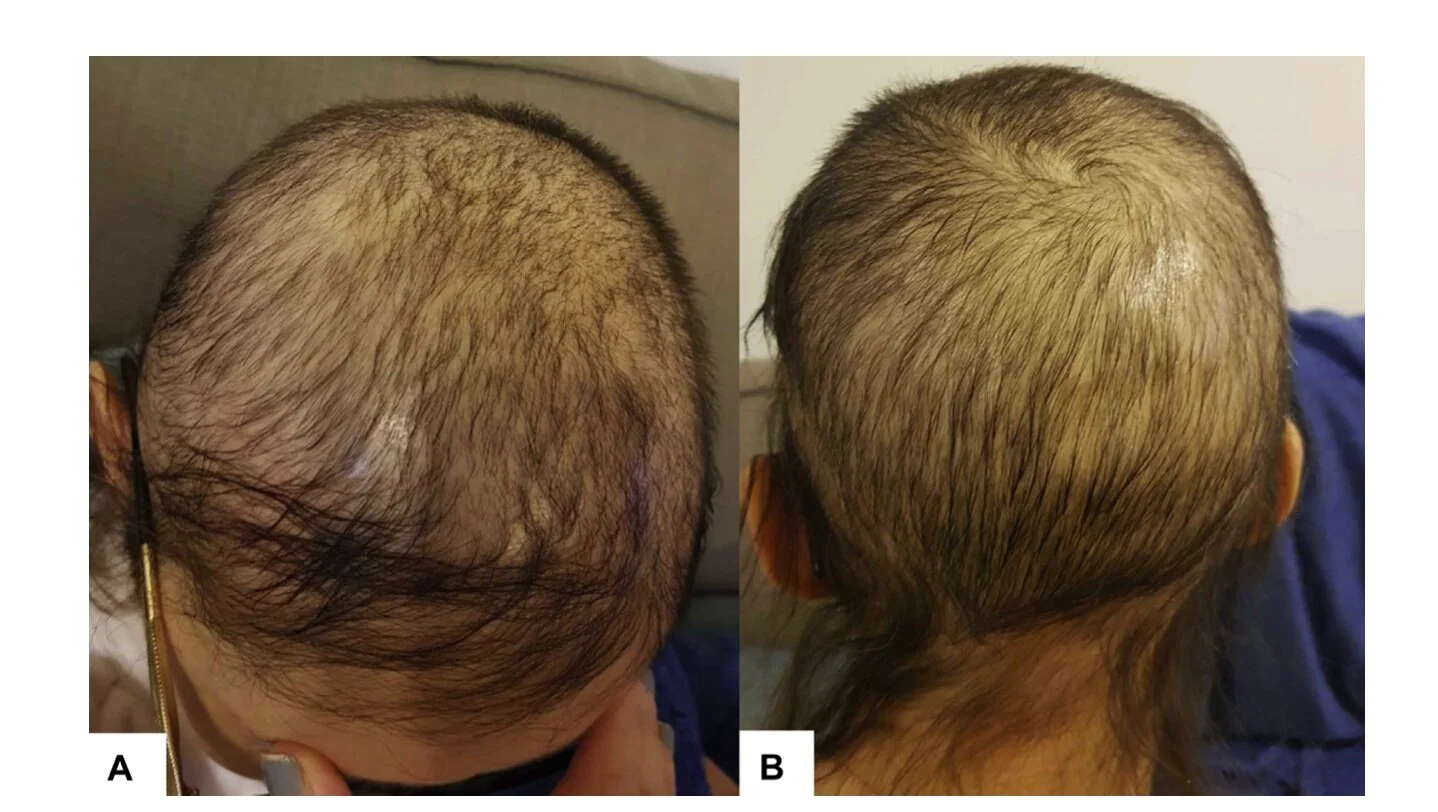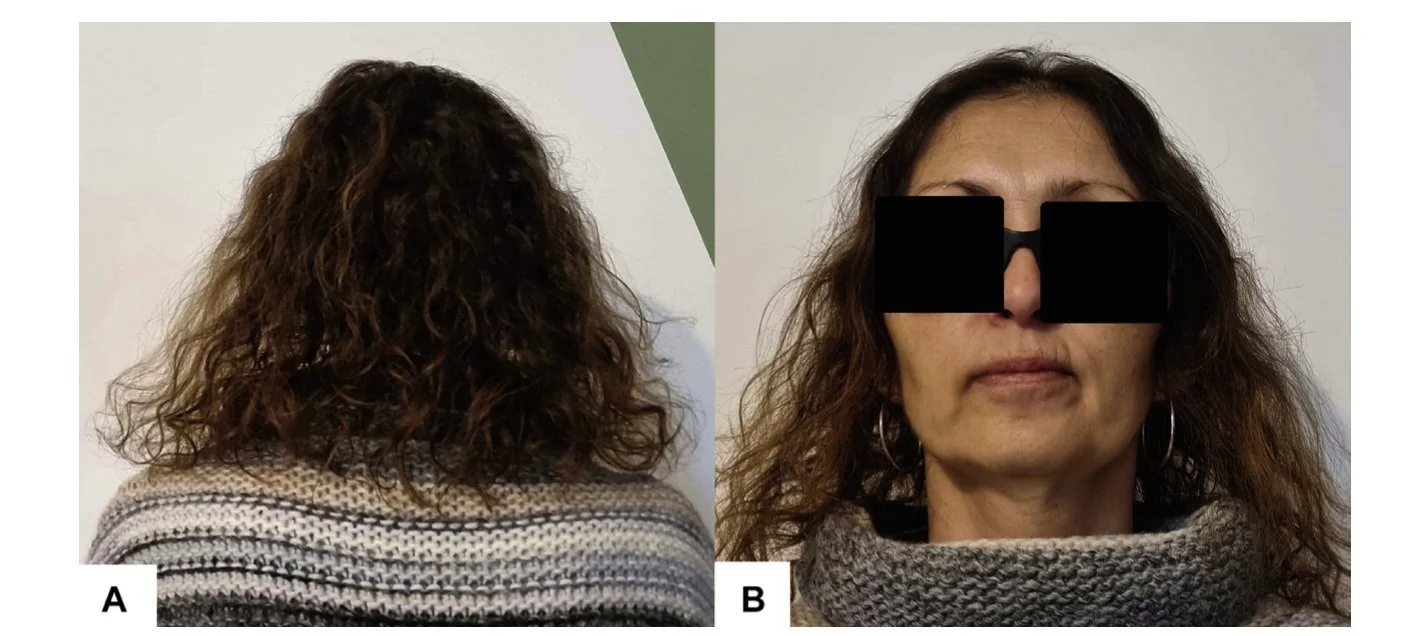Oral Minoxidil for Permanent Chemotherapy Induced Alopecia
Oral Minoxidil is a Treatment Option for Permanent Chemotherapy Induced Alopecia
Hair loss after chemotherapy can be temporary or persistent/permanent. Persistent (formerly named permanent) chemotherapy-induced alopecia (PCIA) refers to the failure of hair to grow back completely after more than 6 months of stopping treatment.
PCIA can have a significant effect on quality of life. The best way to treat PCIA is not clear although minoxidil has been studied in the past and shown to help some patients. Authors of a new report describe a patient who developed PCIA after hematopoietic stem cell transplantation and responded to low-dose oral minoxidil (LDOM) with full hair regrowth.
Lyakhovitsky A et 2022
In a new report, authors described a 41-year old Caucasian woman was diagnosed with non-Hodgkin lymphoma and treated with the “EPOCH-RX protocol” for her lymphoma (which included etoposide, vincristine, cyclophosphamide, doxorubicin, prednisone, and rituximab). The patient experienced complete hair loss after her treatment and this was followed by spontaneous full regrowth.
Two years later, the patient developed therapy-related acute myeloid leukemia. After treatment with busulfan and cyclophosphamide failed, a salvage protocol with cytarabine was administered, followed by allogeneic hematopoietic stem cell transplantation. The patient was given cyclosporine, methotrexate, and antithymocyte globulin to prevent graft vs host disease. As a result of these treatments, she experienced very significant hair loss throughout the scalp. There was minimal hair regrowth and no further improvement after 18 months, which necessitated the use of a scalp prosthesis.
Photo from paper by Lyakhovitsky A et al. 2022 showing significant hair loss 3.5 years after hematopoetic stem cell transplant. Full Reference: Lyakhovitsky A et al.Permanent chemotherapy-induced alopecia after hematopoietic stem cell transplantation treated with low-dose oral minoxidil. JAAD Case Rep. 2022 Feb 17;22:64-67. Images published here through creative commons license.
A punch biopsy of the scalp skin revealed a few miniaturized follicles and the absence of inflammation or fibrosis. The patient did not improve with topical minoxidil nor prednisone.
The patient sought advice again 2 years later. Eyebrows and eyelashes were not affected although scalp hair loss persisted. Laboratory findings were normal. she was started on LDOM at a dose of 1.25 mg daily . Because of the significant improvement without adverse effects, the dosage was increased to 2.5 mg after 3 months, then to 3.75 mg after 3 months, and to 5 mg after 6 months, resulting in complete regrowth. Four months after starting LDOM, the patient was able to remove the scalp prosthesis because of significant improvement. The patient is now on LDOM 5 mg daily therapy and has remained stable for 9 months, with no side effects. Photos of the improvement are shown below:
Photo from paper by Lyakhovitsky A et al. 2022 showing improvement in density 1 year after starting oral minoxidil. Full Reference: Lyakhovitsky A et al. Permanent chemotherapy-induced alopecia after hematopoietic stem cell transplantation treated with low-dose oral minoxidil. JAAD Case Rep. 2022 Feb 17;22:64-67. Images published here through creative commons license.
Comment:
This is an interesting paper and highlights the reason why there is reason to be hopeful in the case of PCIA. In fact, the condition itself has had its name changed from permanent chemotherapy induced alopecia to persistent chemotherapy induced alopecia to reflect that hair loss is not always permanent.
There are several chemotherapies that carry a significant risk of PCIA. These include drugs like paclitaxel, docitaxel, doxorubicin, cyclophosphamide, fluorouricil, thiotepa, cisplatin and busulphan.
It’s like that the use of cyclophosphamide and/or bulsulphan contributed to the PCIA and it’s also possible that prior chemotherapy (doxorubicin, cyclophosphamide) also affected stem cell regeneneration potential even thought she did feel she regrew her hair after the first episode of cancer.
Published Cases of PCIA Successfully Treated with Oral Minoxidil
A few cases of PCIA improvement after LDOM treatment have been published in the medical literature. These include the following:
Freites-Martinez A, et al. Hair disorders in cancer survivors. J Am Acad Dermatol. 2019;80(5): 1199-1213.
Van~o-Galvan S, et al. Safety of low-dose oral minoxidil for hair loss: A multicenter study of 1404 patients. J Am Acad Dermatol. 2021;84(6):1644-1651
Yang X, Thai KE. Treatment of permanent chemotherapy- induced alopecia with low dose oral minoxidil. Australas J Dermatol. 2016;57(4):e130-e132.
Bhoyrul B, et al. Clinicopathologic characteristics and response to treatment of persistent chemotherapy-induced alopecia in breast cancer survivors. JAMA Dermatol. 2021;157(11):1335-1342.
The last study listed (by Bhoyrul et al) was one study we reviewed last year as part of the “Top 20 studies of 2021”:
The Increasing Array of Uses of Oral Minoxidil
Before leaving this subject, let me just remind readers of the increasing number of hair loss conditions that we are using oral minoxidil for. The list is growing all the time!
REFERENCE
Lyakhovitsky A et al. Permanent chemotherapy-induced alopecia after hematopoietic stem cell transplantation treated with low-dose oral minoxidil. JAAD Case Rep. 2022 Feb 17;22:64-67.
ADDITIONAL REFERENCES
Freites-Martinez A, Shapiro J, van den Hurk C, et al. Hair disorders in cancer survivors. J Am Acad Dermatol. 2019;80(5): 1199-1213. https://doi.org/10.1016/j.jaad.2018.03.056
Van~o-Galvan S, Pirmez R, Hermosa-Gelbard A, et al. Safety of low-dose oral minoxidil for hair loss: A multicenter study of 1404 patients. J Am Acad Dermatol. 2021;84(6):1644-1651. https://doi.org/10.1016/j.jaad.2021.02.054
Yang X, Thai KE. Treatment of permanent chemotherapy- induced alopecia with low dose oral minoxidil. Australas J Dermatol. 2016;57(4):e130-e132. https://doi.org/10.1111/ajd. 12350
Bhoyrul B, Asfour L, Lutz G, et al. Clinicopathologic characteristics and response to treatment of persistent chemotherapy-induced alopecia in breast cancer survivors. JAMA Dermatol. 2021;157(11):1335-1342. https://doi.org/10.10 01/jamadermatol.2021.3676
This article was written by Dr. Jeff Donovan, a Canadian and US board certified dermatologist specializing exclusively in hair loss.




